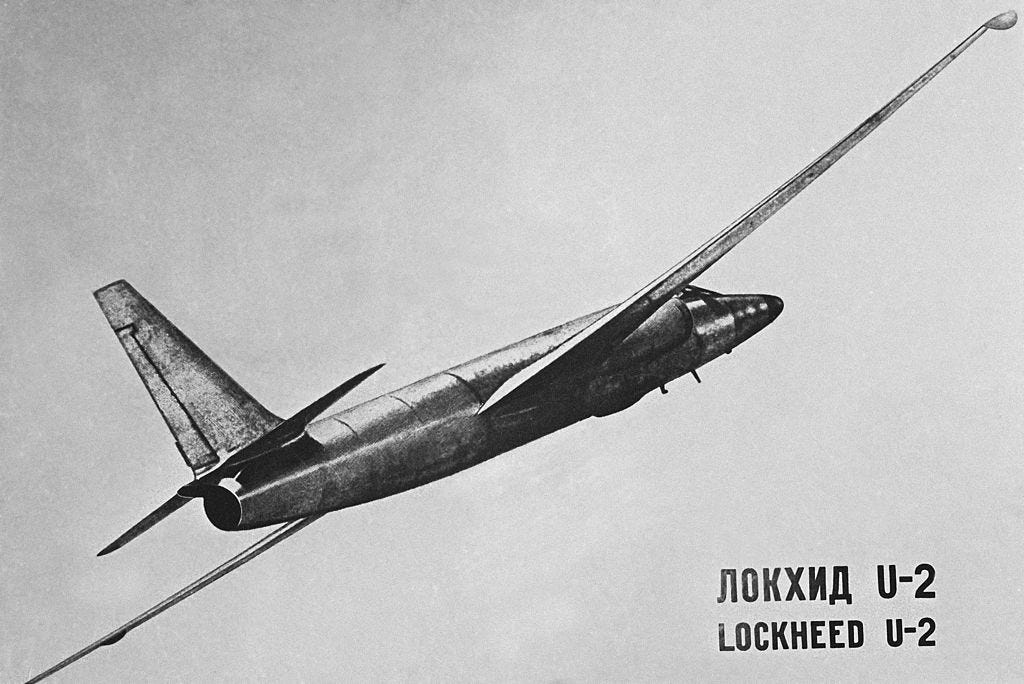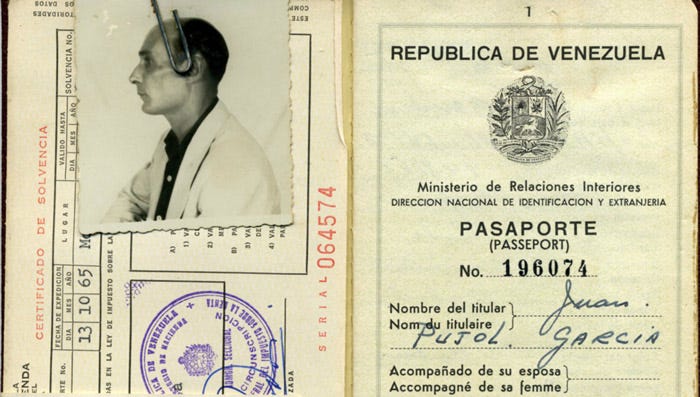This week, we interviewed Shaunak Agarkhedkar, who writes Espionage&, a publication that shines a light on lesser-known stories of international spies and spycraft.
This interview has been lightly edited for length and clarity.

What’s your Substack about in one sentence?
Espionage& narrates real-life stories of spies and their handlers from around the world.
How did your fascination with spies and espionage start? What attracts you to these stories?
My fascination with espionage began three decades ago, when my parents snuck me into a movie theater to watch a James Bond flick. Dad also showed me classics like Where Eagles Dare and The Guns of Navarone, which, I soon discovered, were based on novels. Alistair MaClean somehow led me to Frederick Forsyth, and from there, I discovered John le Carré, Graham Greene, and Helen MacInnes. That was when I fell in love with the genre.
Gadgets play a very limited role in the universe these authors created. Unlike pre-Daniel Craig Bond films—whose plots often hinged on some cool gadget or other—the world of espionage chronicled by those authors has a rawness and gritty realism to it.
In real life, most espionage hinges on interpersonal relationships between spies and their handlers. The handler uses levers like money, ideology, compromise, and ego to cultivate assets, and convinces them to take action. It is these relationships, transactions, motives, and malleable loyalties that fascinate me about espionage.
The lives of spies are meant to be kept “top secret.” How do you conduct your research?
Stories on Espionage& fall into two broad categories: Either something went wrong with the operation and the spy was “burned,” or the events happened so long ago that secrecy doesn’t matter anymore. With burned spies, the method of research depends upon how much time has elapsed. The older the incident, the more likely it is that there are declassified official documents. A few hours of searching dark, musty corners of the internet usually yields a treasure trove.
When I was writing the story of Capt. Francis Gary Powers’s 70,500-foot flight, for example, I referred to declassified United States Air Force and CIA reports about the U-2 aircraft, as well as mission debriefs of U-2 pilots. They offered insights into objectives and achievements, added authenticity and flavor to the story, and led to follow-up stories about the reconnaissance aircraft that followed: the A-12 Oxcart, the MiG-25 Foxbat, the SR-71 Blackbird and the MiG-31 Foxhound.
As far as more contemporaneous stories are concerned, research is rather unstructured. In a few cases, there are news reports to rely upon. But I have also written stories that predated news reports. I narrated the story of how the Taliban, having got their hands on a biometrics system that the United States used to identify Afghan nationals who were working with them, was going door-to-door to weed out people who had collaborated with the previous regime. That story preceded reports by established news organizations. I could do that because I could connect the dots based on a stream of frantic tweets about Afghan nationals.
Being an avid reader of the espionage fiction genre really helps. I spent a couple of years doing research on intelligence agencies in the Indian subcontinent and Europe for my espionage novels (the Let Bhutto Eat Grass series). All that helps contextualize bits and pieces of information and construct a narrative that can then be corroborated from various public sources.
You sometimes mention old spy gadgets, like the subminiature camera, in your writing. What’s a favorite gadget you’ve discovered through your research?
I am absolutely fascinated by the Type I camera systems used on the A-12 Oxcart aircraft. They could photograph the entire country of Vietnam to a resolution of one foot from an altitude of 16 miles in less than 13 minutes. And they built this in the 1950s and ’60s.
Then there was the device used by the CIA to detect communication signals passed between the Soviet Ministry of Defense in Moscow and the Institute for Nuclear Research at Troitsk. As chronicled in Mission Impossible in 1970s Moscow, a CIA officer crawled to the bottom of a duct, attached a sensor to the cable externally in a manner that left no marks, and then retrieved it after a few weeks. The sensor had recorded all transmissions passing through the cable onto the tapes contained inside it. Fascinating stuff.
How has the nature of espionage shifted since the Cold War?
Towards the end of the Cold War, U.S. intelligence was repeatedly caught flat-footed. When the head of the KGB visited Washington, D.C., in the mid-’80s and told Robert Gates, then deputy director of the CIA, that the Soviets wanted to withdraw from Afghanistan, the CIA dismissed it as a ruse. A few years later, they completely missed the fall of the Soviet Union. These were significant intelligence failures, but they pale in comparison to the CIA’s inability to pivot meaningfully until 9/11.
While Cold War-era espionage was focused on nation states, the CIA and Saudi GID’s anti-Soviet actions in Afghanistan had resulted in the formation of a transnational network of Islamic extremists, something my guest and I touched upon in the Afghanistan podcast series on Espionage&. This network grew at a feverish pace in the CIA’s blind spot across the Middle East and Africa, with offshoots in the United States, and it was only after 9/11 that the CIA as an organization changed tack.
And that symbolizes how espionage changed after the fall of the Soviet Union. Non-state actors achieved prominence and, towards the end of the last millennium, espionage programs began tracking them seriously. This lasted nearly two decades and led to another inflection point, the current one where Western intelligence agencies are pivoting once more to address the Chinese threat. The Chinese MSS, meanwhile, used five decades—from the time Nixon visited China in the 1970s to the late 2010s—to grow and fine-tune their espionage programs against Europe and the United States.
Who is a spy that we should all know about but likely don’t?
There are so many remarkable individuals that it’s difficult to highlight just one.
There’s Adolf Tolkachev, variously known as the Billion Dollar Spy and the man who ruined the Soviet warplane industry in less than a decade. He was prolific; the Pentagon and the CIA valued his “product” as being worth more than a billion dollars in the 1980s.
Then there’s the Mossad team—Danny Limor, Gad Shimron, et al. Over half a decade, this team of courageous officers helped rescue thousands of Ethiopian Jews from a hostile government in Sudan.
And finally, there’s Juan Pujol García (Codename: GARBO). The Nazis paid him the equivalent of £1 million to operate a network of 27 spies inside Great Britain during the Second World War. His reports convinced the German High Command that the actual invasion would happen at Calais, not Normandy. At the end of the war, the British government made him Member of the Most Excellent Order of the British Empire.
Who’s another Substack writer you’d recommend?
I look forward to Lila Krishna’s posts on Write-Brained. What started as the mailing list of a writer with eclectic influences cultivating her diverse audience has turned into something I’d describe as “Follow along as Lila writes a novel about the origins of India’s independence movement and goes down historical rabbit holes.”
Subscribe to Shaunak’s publication, Espionage&, and find him on Twitter.




